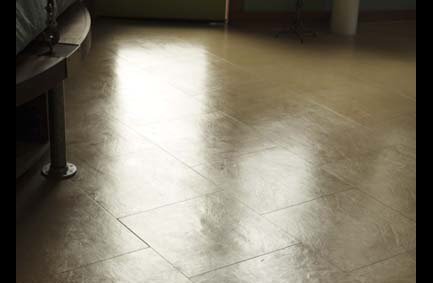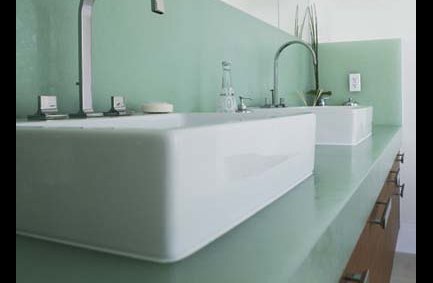Modern Eco-friendly Products
Breathe easy. Even though the Environmental Protection Agency estimates that most Americans spend approximately 90% of their time indoors, and home interior furnishings and materials can emit hundreds of pollutants and Volatile Organic Compounds (VOC) that can lead to a long list of health problems, here are the EPA's options for greener products and services.
It makes sense to avoid upholstery, rugs, or carpeting treated with flame retardants, which are known to be unhealthful and are being phased out in many states. Natural woods, stone, and ceramic tile, and cotton or wool fibers are green, long lasting choices for interiors, and there are now water based low VOC paints and glazes on the market that can still provide the depth of color and durability, without the fumes and disposal concerns.
Here are a few interesting eco-friendly products. The Kirei textured coco tiles, top photo, are made of coconut shells, which are often burned after the processing of the meat and pulp. In this case the shells are salvaged and made into decorative tiles with intricate basket weave or scalloped designs.
Another desirable, often expensive product that ends up in the dump is leather. Even luxurious leather gets thrown away. Scraps from furniture, shoemaking, and car interiors eventually make their way into landfills. EcoDomo recycled leather is made using a stone-grinding method that turns these scraps into richly colored tiles and panels (2nd photo), which deaden sound and are comfortable to stand on.
This pretty, green, solid-surface could be made from a bottle of wine or beer you once enjoyed, as it is composed of 100% post-consumer recycled glass (3rd photo). Available in white, light green, dark green, blue, and brown, the heat compression method uses no binders, colorants, fillers, or other admixtures, and has no off-gassing. Called Bio-Glass by Coverings etc, it can be used for countertops, walls, or floors.
At Whipple Russell Architects we are pleased that our clients are increasingly expressing an interest in sustainability and environmental values.



